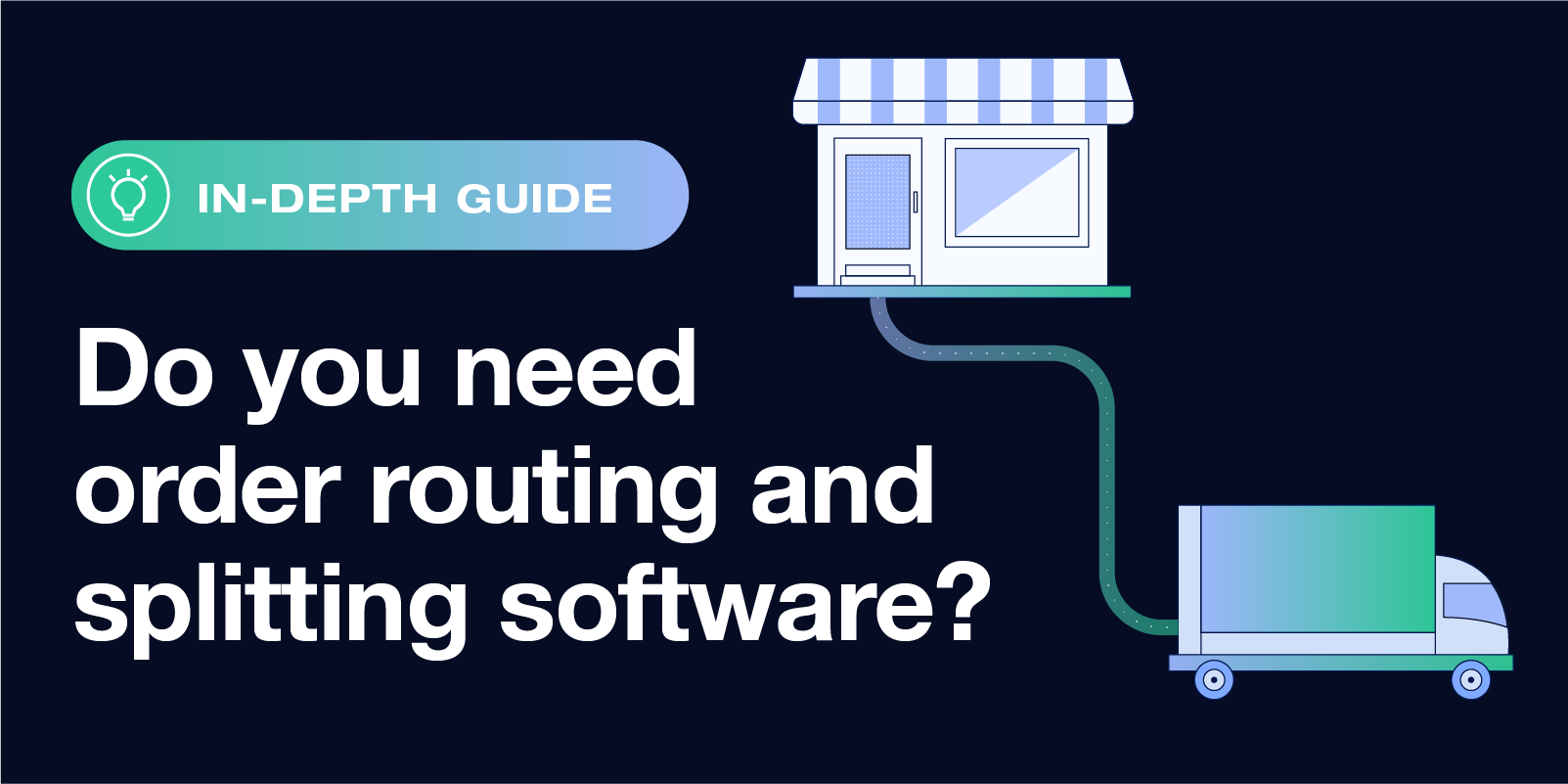Fulfillment is one of those things customers don’t notice until it goes wrong. They might not jump for joy when an order is delivered as expected, but they’ve certainly stopped purchasing from brands that didn’t follow through on delivery estimates.
Putting the pieces of the fulfillment puzzle together is crucial for ecommerce businesses to get right. To scale effectively, merchants using more than one fulfillment solution at a time need a way to efficiently manage and automatically route their orders.
In this blog, you will learn what order routing and splitting software does and how it can be used to improve order fulfillment.
What is order routing and splitting?
Order routing and splitting is the process of choosing and executing the best path for order fulfillment when faced with more than one option. This involves making some of the following decisions:
- Which warehouse to ship from
- Which fulfillment service or carrier to use
- Which shipping method to use (expedited, overnight, air, etc.)
- Whether to split line items from a single order
Robust order routing and splitting software automates the decision-making process by designating how products should be delivered based on predefined rules. This increases the speed of fulfillment and decreases the resources required to manually manage the process, while giving businesses the ability to set their own custom fulfillment logic.
How is order routing and splitting used in ecommerce?
There are a handful of common scenarios where a customer’s order might need to be routed or split into multiple shipments:
- Inventory availability: If a customer places a single order containing multiple products that are not available in the same warehouse, the order can be automatically split so that each product ships from the warehouse where it is stocked.
- Marketplace requirements: Certain marketplaces have rules about how a product should be packaged. You can route orders to a fulfillment service with the correct packaging options to help solve this problem. Other limitations, like only being allowed to create one seller account per tax ID, make routing orders a necessity.
- Product requirements: Some products might need to be shipped separately due to their weight, dimensions, and handling requirements. For example, a glass aquarium, a live guppy fish, and an aquarium bubbler all have different packaging and handling requirements to ensure the products remain intact (and alive!), and may be split and routed to the best fulfillment option.

Does my business need order routing and splitting software?
Your business might need order routing and splitting software if you encounter the following problems:
- You sell products that have varying handling and shipping requirements
- You frequently delay orders due to insufficient warehouse stock, despite having items in stock at other locations.
- You have high shipping costs due to routing inefficiencies between your warehouses and fulfillment services
- You have a global customer base and find it difficult to manage your system of warehouses, fulfillment services, and transportation methods.
- You have pre-orders and backorder products in your catalog, but don’t want to delay products that are ready to ship.
- Your business has grown past the point of manual order fulfillment, and you need an automated tool that can help you scale.
- You use multiple fulfillment services and need an efficient way of routing orders to the appropriate service provider based on a set of predetermined criteria.
What should I look for in order routing and splitting software?
While the right order routing and splitting solution for your business depends on the fulfillment problems that you’re attempting to solve, there are multiple features that you can expect in robust order routing and splitting software:
Custom rules to route and split orders based on a variety of criteria
SKUs: Use SKU mapping to assign specific SKUs to specific fulfillment methods. For example, if SKUs 1-50 are fragile glass aquariums, and SKU 51-100 are hardy aquarium stones, you can route the first group to the fulfillment option that best handles fragile items, while the second group can be routed to your regular fulfillment service.
Availability: Use your warehouses efficiently by setting rules based on product availability. If a SKU is out of stock at warehouse A, automatically route the order to warehouse B.
Brand: Split line items from a single order that contains products from different brands to their respective ecommerce stores and fulfillment methods.
Custom labels: Bring more utility to an already versatile method of grouping products. For example, you can route and split orders based on promoted products, sales campaigns, price buckets, material type, or any other catalog data that you have available.
Unified dashboard
Unified dashboards simplify order management by allowing you to see your orders from multiple fulfillment sources, with the ability to filter through warehouse and fulfillment service data to find information on availability, order status, and more.
Integrates with third-party multi-channel fulfillment services like Amazon MCF
Amazon Multi-Channel Fulfillment (MCF) is a third-party logistics (3PL) service for ecommerce fulfillment that merchants, regardless of whether they sell on Amazon or not, can use to fulfill orders on any off-Amazon sales channel, including their own websites.
For marketplaces that have rules about how a product should be packaged, you can use Amazon MCF features like the Blank Box delivery option, Block Amazon Logistics, and map shipping methods from other marketplaces to Amazon’s accepted values.
Amazon MCF integrates with powerful software solutions like FeedAMP, Feedonomics’ automated order management technology, to enhance the benefits of a robust fulfillment service.
Integrates with and enhances your existing ecommerce software
Robust order routing and splitting software doesn’t exist in isolation. It should have integrations with your ecommerce platform, feed management solution, order management software, and the marketplaces you sell on for a streamlined process. These cross-platform integrations are especially important for merchants pursuing an omnichannel commerce strategy.
Unlock and scale your ecommerce capabilities with Feedonomics
Feedonomics helps you reduce time, effort, and mistakes while making it possible to fulfill orders from wherever it suits you best.
By using custom rules, you can specify which orders and items are fulfilled through your ecommerce platform, OMS, warehouse, Amazon MCF, or other fulfillment solutions.
Get all the functionality you need, plus full-service support from our feed specialists.
Combine order routing with powerful catalog management to scale your ecommerce business.

With its leading data feed management platform, Feedonomics helps brands, retailers, and agencies optimize and list products on hundreds of shopping destinations around the world. Learn more about our full-service solutions for advertising channels and marketplaces.

